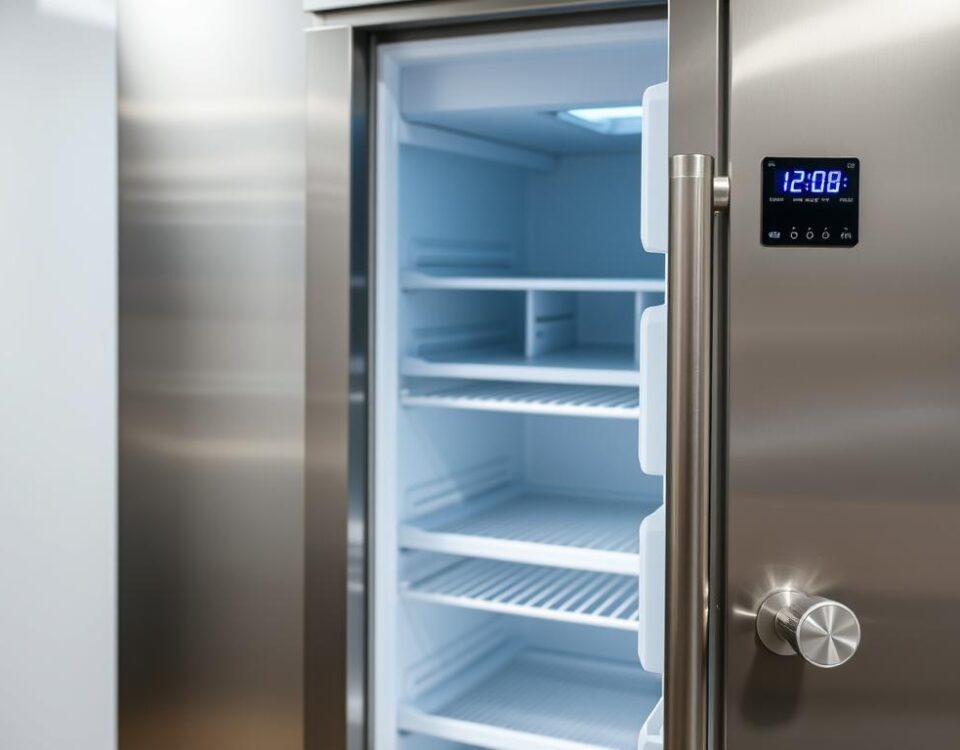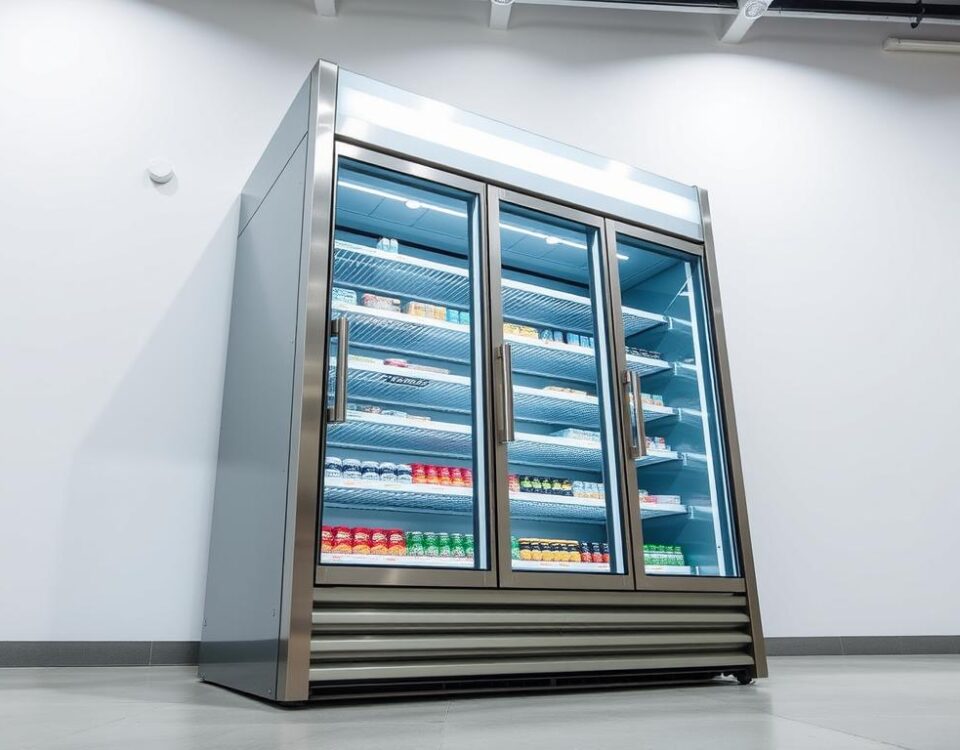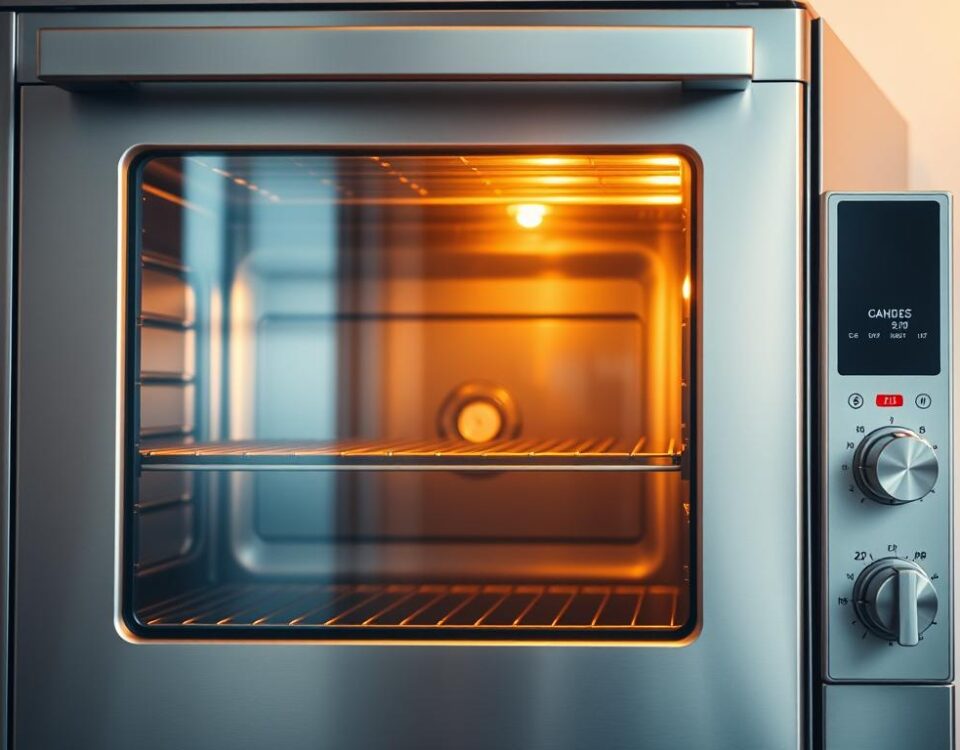
6 Hidden Ways SERP Features Can Skyrocket or Sink Your Restaurant’s Traffic
July 31, 2025
Virtual Restaurants in 2026: What They Really Mean for Small Operators
August 1, 2025The rise of ghost kitchens has revolutionized the food service industry, offering a delivery-only business model that has captivated entrepreneurs and consumers alike. I recall a local restaurant that pivoted to a virtual restaurant model during the pandemic, resulting in a significant surge in sales. This anecdote highlights the adaptability and resilience of businesses in the face of adversity.
Did you know that the global cloud kitchens market is projected to grow exponentially in the coming years? As traditional restaurants reopen, ghost kitchens continue to thrive, driven by the increasing demand for food delivery through delivery apps. What makes these kitchen space operations so profitable?
As we explore the world of ghost kitchen operations, you’ll discover the six hidden secrets that can make your venture more profitable and sustainable. Can you afford to miss out on this opportunity?
Key Takeaways
- Understand the revolutionary concept of ghost kitchens and their impact on the restaurant industry.
- Learn why ghost kitchen operations are crucial for entrepreneurs entering this rapidly growing segment.
- Discover how the pandemic accelerated the growth of ghost kitchens.
- Uncover the six hidden secrets to making ghost kitchen operations more profitable.
- Explore the opportunities ghost kitchens present for established brands and new entrepreneurs.
Understanding the Ghost Kitchen Revolution
The rise of ghost kitchens is transforming the restaurant industry in profound ways. As a concept, ghost kitchens allow restaurants to operate without a physical dining space, focusing solely on delivery and online orders.
What Are Ghost Kitchens?
Ghost kitchens, also known as virtual or cloud kitchens, are commercial cooking spaces that produce food solely for delivery or pickup. They don’t have a storefront or dining area, which significantly reduces operational costs.
This business model is particularly appealing to restaurateurs looking to expand their reach without the hefty investment of opening a new brick-and-mortar location. By leveraging ghost kitchens, restaurant brands can test new markets, launch new concepts, or simply increase their delivery capacity.
The Explosive Growth of Delivery-Only Restaurants
The food delivery market is experiencing explosive growth, with projections suggesting it could reach $1 trillion by 2030. This growth is driven by changing consumer preferences, technological advancements, and the rise of ghost kitchens.
The COVID-19 pandemic accelerated the adoption of delivery-only restaurant models, permanently changing consumer behavior regarding food delivery. Major restaurant brands are now investing heavily in ghost kitchen operations to expand their reach without the costs associated with traditional brick-and-mortar expansion.
| Year | Food Delivery Market Size | Growth Rate |
|---|---|---|
| 2020 | $100 billion | 10% |
| 2025 | $500 billion | 20% |
| 2030 | $1 trillion | 15% |
The ghost kitchen business model is attracting significant investment from venture capital and established restaurant groups. As technology continues to advance in online ordering and delivery logistics, the rapid expansion of ghost kitchen operations is expected to continue.
How Ghost Kitchen Operations Differ from Traditional Restaurants
Ghost kitchens are revolutionizing the food industry with their unique operational model. Unlike traditional restaurants, ghost kitchens focus solely on delivery, streamlining their operations to maximize efficiency.
Delivery-First Business Model
The delivery-first business model adopted by ghost kitchens simplifies operations and increases efficiency with every online order. By eliminating dine-in services, ghost kitchens can dedicate their kitchen space entirely to preparing food for delivery. This focused approach allows for optimized workflows, ensuring that orders are fulfilled quickly and accurately.
At ghost kitchens, the process is straightforward: I cook up the order, place the food outside the kitchen, and a delivery driver handles the rest. This streamlined process enables ghost kitchens to fulfill more orders in less time, making them highly efficient.
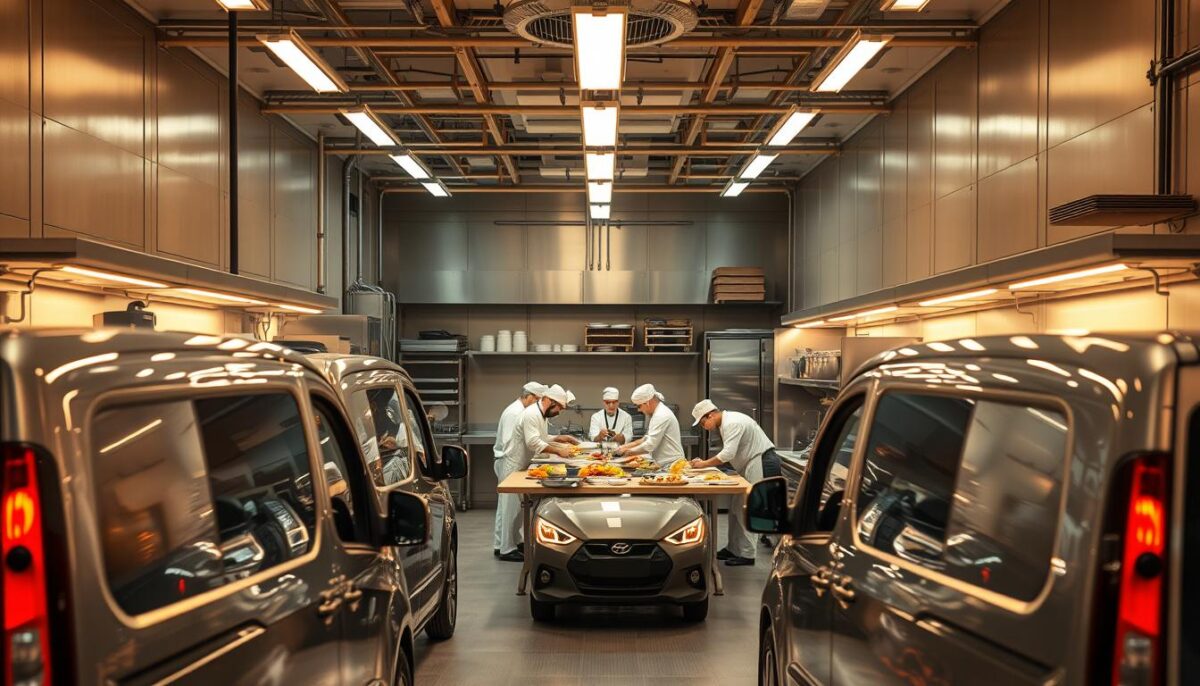
Operational Workflow Comparison
When comparing the operational workflows of ghost kitchens versus traditional restaurants, several key differences emerge. Ghost kitchens eliminate the competing priorities that traditional restaurants face when balancing dine-in customers with delivery orders. By focusing solely on delivery, ghost kitchens can optimize their kitchen layouts for food preparation, with dedicated stations for different menu items and clear handoff points for delivery drivers.
Ghost kitchens can process more orders with fewer staff members due to their specialized operational workflows and the elimination of front-of-house responsibilities. Additionally, technology integration in ghost kitchens creates more efficient order management compared to traditional restaurants juggling multiple delivery tablets and in-person orders.
The Economics Behind Ghost Kitchens
The economics of ghost kitchens are rooted in their ability to minimize labor and operational costs while maximizing delivery efficiency. By operating a virtual restaurant from a dedicated kitchen space, ghost kitchens can streamline their operations to focus on fulfilling online orders.
Cost Structure Breakdown
One of the primary advantages of ghost kitchens is their reduced cost structure compared to traditional restaurants. With lower labor costs and overhead, ghost kitchen operators can allocate more resources to food quality and customer satisfaction. The cost savings come from not having to maintain a dining area, reducing staff, and optimizing kitchen space for delivery and takeout.
| Cost Component | Traditional Restaurant | Ghost Kitchen |
|---|---|---|
| Labor Costs | High | Lower |
| Overhead Costs | High | Lower |
| Kitchen Space | Dine-in and Takeout | Dedicated to Delivery |
Profit Margin Potential
Ghost kitchens offer significant profit margin potential due to their efficient operations and reduced costs. By operating multiple virtual restaurant brands from a single kitchen space, ghost kitchen operators can increase revenue without proportionally increasing costs. Additionally, data-driven decision making allows for continuous improvement in profit margins through menu optimization and operational efficiency.
To maximize profit margins, ghost kitchen operators should focus on menu engineering, ingredient cross-utilization, and operational efficiency. By leveraging delivery apps effectively and managing delivery costs, ghost kitchens can maintain healthy margins despite commission fees.
Types of Ghost Kitchen Models to Consider
As the ghost kitchen industry continues to evolve, various models have emerged to cater to different business needs. This diversity allows entrepreneurs to choose the most suitable option for their delivery-focused businesses.
Commissary Kitchens
Commissary kitchens are shared kitchen spaces that offer a cost-effective solution for ghost kitchen operators. These kitchens provide the necessary infrastructure, including equipment and utilities, allowing businesses to focus on food preparation and delivery. Commissary kitchens often have existing health department permits, simplifying the setup process for new operators.
Commercial Kitchens
Commercial kitchens are fully equipped facilities that can be rented or leased for ghost kitchen operations. They often come with existing commercial-grade equipment and may offer additional services such as storage and cleaning. Using a commercial kitchen can be an efficient way to launch a ghost kitchen, as it eliminates the need for initial equipment investments.
Incubator Kitchens
Incubator kitchens are designed to support new and emerging food businesses. They typically offer shared facilities, mentorship programs, and networking opportunities. Incubator kitchens can be an ideal choice for ghost kitchen startups, providing access to resources and expertise that can help them grow and succeed.
Kitchen Pods
Kitchen pods are modular, mobile kitchen units often converted from shipping containers. They offer flexibility in location, allowing operators to test different markets or follow seasonal demand. While kitchen pods are smaller and may lack natural light, they can be strategically placed in high-demand areas with limited commercial kitchen space.
| Ghost Kitchen Model | Key Features | Ideal For |
|---|---|---|
| Commissary Kitchens | Shared space, cost-effective, existing permits | Startups, small businesses |
| Commercial Kitchens | Fully equipped, rental/leasing options | Established businesses, high-volume delivery |
| Incubator Kitchens | Shared facilities, mentorship, networking | New entrepreneurs, innovative concepts |
| Kitchen Pods | Modular, mobile, flexible location | Market testing, seasonal demand, limited space |
In conclusion, the choice of ghost kitchen model depends on the specific needs and goals of the business. By understanding the characteristics of each model, entrepreneurs can make informed decisions and optimize their operations for delivery success.
Secret #1: Strategic Location Selection

The key to a successful ghost kitchen lies in choosing a location that optimizes delivery logistics. With delivery-optimized facilities that are easily accessible for delivery drivers, it’s never been easier to reach a high volume of customers in the heart of a city at such a low cost.
Delivery Radius Optimization
To maximize efficiency, it’s crucial to optimize the delivery radius. This involves identifying areas with high demand for food delivery and positioning the ghost kitchen in a physical location that allows for quick and efficient delivery. By analyzing demographic data, competitor analysis, and delivery app heat maps, ghost kitchen operators can pinpoint the best locations.
Targeting High-Density Delivery Areas
Urban centers, college campuses, office parks, and high-density residential areas represent prime targets for ghost kitchen operations. These areas typically have a high demand for food delivery and limited dining options. By targeting these areas, ghost kitchens can capitalize on the demand and establish a loyal customer base. It’s also essential to analyze the competitive landscape to find the sweet spot between high demand and manageable competition.
By strategically selecting a location and optimizing the delivery radius, ghost kitchens can thrive in areas where physical restaurant space is limited or prohibitively expensive. This approach enables them to serve dense populations without the need for prime retail locations. Evaluating the delivery infrastructure, including the availability of delivery drivers and ease of access for pickup, is also crucial. Furthermore, ghost kitchens can leverage location-based marketing strategies to target customers within their delivery radius effectively, enhancing their visibility and appeal to potential customers.
Secret #2: Menu Engineering for Delivery Success

The secret to a profitable ghost kitchen lies in carefully crafting a menu that thrives in the delivery-only environment. With the rise of ghost kitchens, understanding how to optimize your menu for delivery success is crucial.
Foods That Travel Well
When it comes to delivery, not all foods are created equal. Some dishes travel better than others, maintaining their quality and presentation during transit. To optimize your ghost kitchen menu, focus on items that are:
- Robust and less prone to damage
- Able to maintain temperature well
- Not overly reliant on presentation that may be compromised during delivery
By focusing on these types of dishes, you can ensure that your customers receive high-quality food, even after it has traveled a significant distance.
Data-Driven Menu Decisions
One of the key advantages of operating a ghost kitchen is the ability to make data-driven decisions. With each online order, you receive valuable data that can be used to optimize your menu based on demand. This means you can:
- Use data analytics from delivery apps to inform menu decisions
- Continuously optimize your menu based on performance metrics
- Identify menu gaps and opportunities in your delivery area
- Use A/B testing to optimize conversion rates and average order values
- Keep menus fresh and aligned with changing customer preferences using seasonal data and trend analysis
- Refine recipes and presentation based on customer feedback and ratings
By leveraging this data, you can create a virtual restaurant menu that is tailored to your customers’ preferences, maximizing your chances of success in the competitive world of ghost kitchens.
Secret #3: Multi-Brand Strategy from One Kitchen

The ability to operate several virtual brands from a single ghost kitchen is a game-changer for the delivery-first business model. By leveraging the same kitchen space and equipment, you can significantly increase your revenue potential without a proportional increase in operational costs.
Creating Complementary Virtual Brands
Creating multiple virtual brands that complement each other is a strategic approach to maximizing your ghost kitchen’s potential. This involves developing brand identities that cater to different customer preferences or cuisine types, all while sharing kitchen resources. For instance, you could have one brand specializing in vegan cuisine and another in gourmet burgers, both operating from the same kitchen.
To achieve this, it’s essential to conduct market research to identify gaps in the market and understand consumer trends. By doing so, you can create brands that not only coexist but also enhance each other’s appeal by offering diverse menu options.
Maximizing Kitchen Capacity with Multiple Concepts
Maximizing kitchen capacity is crucial when operating multiple virtual brands. This involves optimizing kitchen workflows, scheduling, and inventory management to ensure that all brands operate efficiently. By implementing a robust order management system and streamlining kitchen operations, you can produce high-quality dishes for multiple concepts simultaneously.
Shared ingredients across different brands can help reduce inventory costs, and staggering menu offerings and promotions can smooth out order volume throughout the day. As your operation scales, you can strategically add new virtual brands, further maximizing your kitchen’s capacity and revenue potential.
By adopting a multi-brand strategy, ghost kitchens can not only survive but thrive in a competitive market. This approach allows for flexibility, innovation, and the ability to adapt to changing consumer preferences, making it a powerful tool in the ghost kitchen arsenal.
Secret #4: Technology Integration for Streamlined Operations
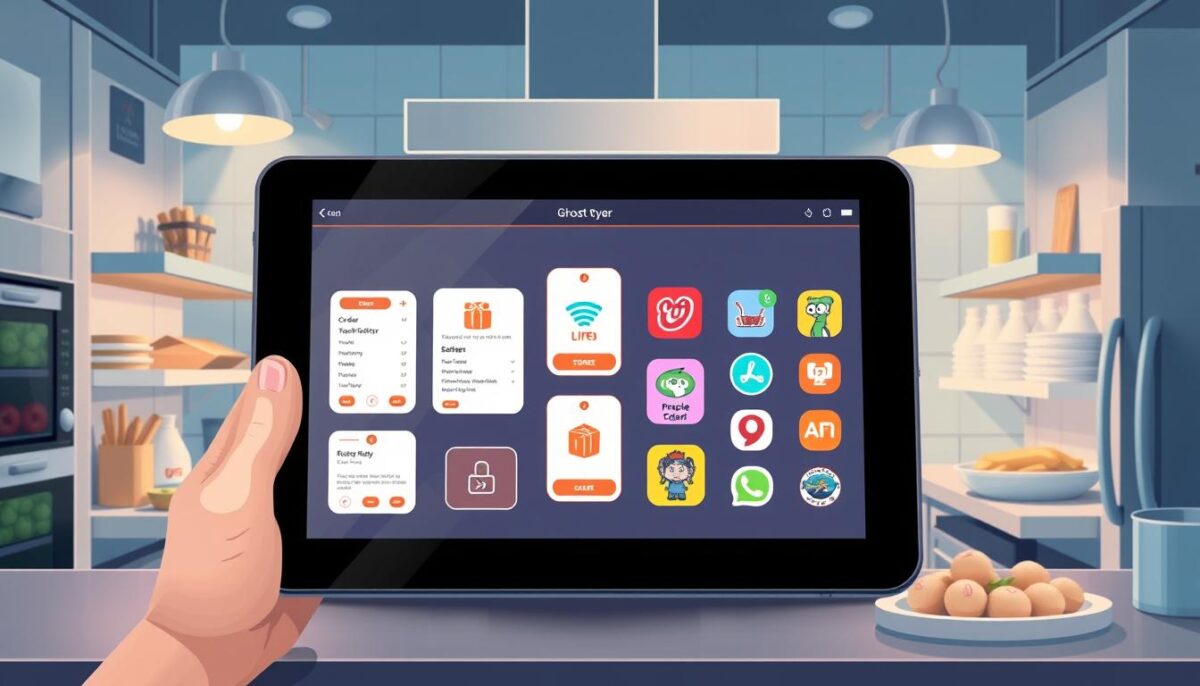
In the fast-paced world of ghost kitchens, technology integration is the key to unlocking streamlined operations. By leveraging advanced technology solutions, ghost kitchens can significantly improve their efficiency, reduce costs, and enhance customer satisfaction.
Order Management Systems
An effective Order Management System (OMS) is crucial for ghost kitchens to manage their operations efficiently. An OMS consolidates orders from multiple delivery platforms into a single interface, allowing for real-time tracking and management. This integration enables ghost kitchens to streamline their workflow, reduce errors, and increase productivity.
With an OMS, ghost kitchens can also gain valuable insights into their operations, including order volume, peak hours, and customer preferences. This data can be used to optimize menu offerings, staffing, and inventory management, ultimately leading to improved profitability.
Delivery Platform Integration
Seamless integration with multiple delivery platforms is vital for ghost kitchens to maximize their order volume and visibility. By integrating with various delivery apps, ghost kitchens can expand their reach and tap into a broader customer base.
To optimize their listings on delivery platforms, ghost kitchens should focus on menu presentation, pricing strategy, and promotional opportunities. By leveraging data from delivery platforms, ghost kitchens can refine their menu offerings, adjust pricing, and create targeted promotions to drive sales and customer engagement.
By integrating technology into their operations, ghost kitchens can achieve a competitive edge in the market. With streamlined operations, improved customer satisfaction, and data-driven decision-making, ghost kitchens can drive growth and profitability in the ever-evolving food delivery landscape.
Secret #5: Labor Optimization Without Compromising Quality

Labor optimization is a critical component of ghost kitchen success, enabling businesses to maintain high-quality output while controlling costs. In the context of ghost kitchens, labor optimization involves streamlining staffing models and training programs to efficiently manage multiple virtual brands.
Efficient Kitchen Staffing Models
To optimize labor, ghost kitchens must adopt efficient staffing models that can handle fluctuating demand. This involves analyzing peak hours, dayparting, and menu complexity to determine the optimal staff levels. By implementing flexible scheduling and cross-training staff, ghost kitchens can maximize productivity without overstaffing.
Training for Multi-Menu Execution
Effective training is crucial for ghost kitchen staff to execute multiple menus or virtual brands simultaneously. This includes developing standardized recipes and preparation methods, as well as implementing visual aids and digital recipe guides. Progressive training programs that build staff capabilities from simple to complex menu items are essential for maintaining consistency across all menu items and virtual brands.
Regular quality checks and feedback mechanisms are also vital for maintaining high standards. By creating a fair and supportive work environment, ghost kitchens can ensure that staff are motivated to deliver high-quality output, even in a fast-paced, multi-brand environment.
By focusing on labor optimization, ghost kitchens can improve profitability while maintaining the quality that customers expect from their favorite virtual restaurant brands.
Secret #6: Marketing Strategies for Virtual Restaurants
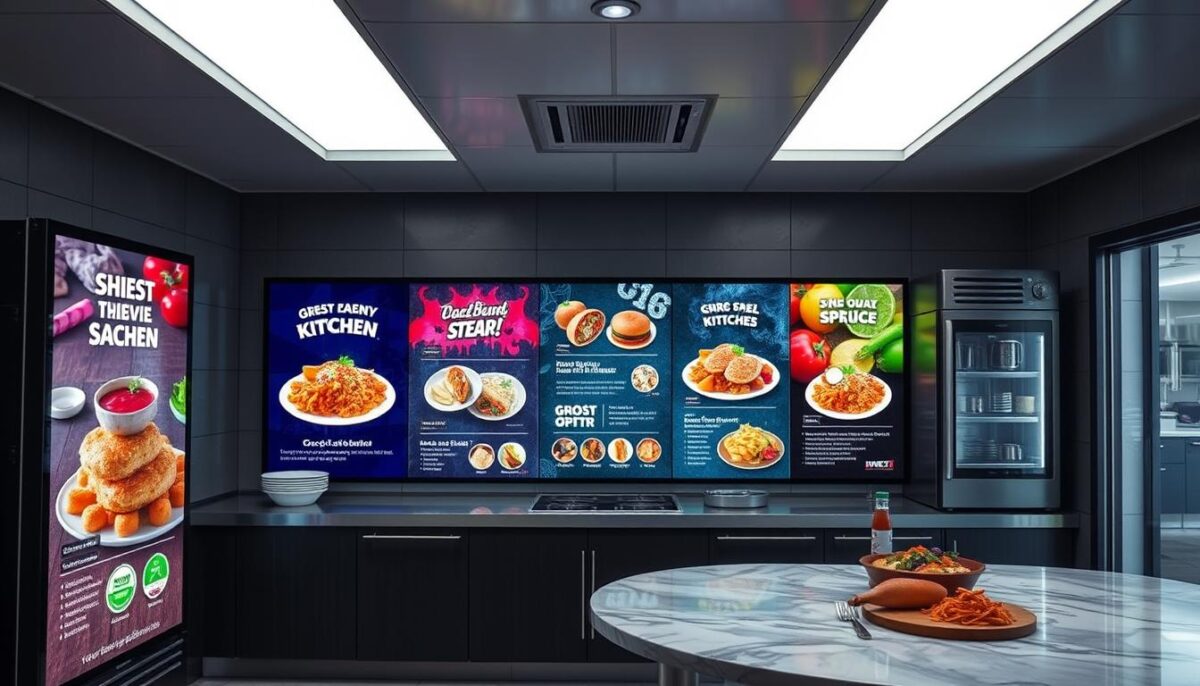
As the ghost kitchen industry continues to evolve, effective marketing strategies are crucial for standing out in a crowded delivery market. With the rise of virtual restaurants, it’s essential to adopt innovative approaches to attract and retain customers.
Digital Presence Building
Establishing a strong digital presence is vital for ghost kitchens. This involves creating a user-friendly website, engaging in social media, and leveraging email marketing campaigns. By building a robust online presence, ghost kitchens can increase their visibility and reach a wider audience.
To enhance digital presence, ghost kitchens should focus on search engine optimization (SEO) to improve their search rankings. Utilizing online directories and review sites can also help to build credibility and attract new customers.
Leveraging Delivery App Placement
Delivery apps play a critical role in the success of ghost kitchens. To maximize visibility, ghost kitchens should optimize their placement within these apps. This can be achieved by utilizing featured placement options, offering special promotions, and implementing loyalty programs.
Analyzing performance metrics on delivery apps is also crucial. By monitoring search ranking, conversion rates, and customer ratings, ghost kitchens can refine their marketing strategies and improve their overall performance. Exclusive partnerships with delivery platforms can provide a competitive edge, but it’s essential to balance presence across multiple apps while managing different commission structures.
For smaller ghost kitchen operations, competing with larger players requires strategic marketing. By focusing on niche markets, leveraging local SEO, and engaging with the community, smaller operators can carve out their own space in the market.
Overcoming Common Ghost Kitchen Challenges
As the ghost kitchen industry continues to grow, so does the need to address its inherent challenges head-on. Operating a ghost kitchen comes with unique operational and logistical hurdles that can impact profitability and customer satisfaction. Two of the most significant challenges include managing delivery platform fees and maintaining food quality during delivery.
Managing Delivery Platform Fees
Delivery platform fees can significantly eat into a ghost kitchen’s profit margins. To manage these fees effectively, it’s crucial to diversify your delivery channels. By partnering with multiple delivery services, you can reduce dependence on a single platform and negotiate better rates. Additionally, consider implementing your own ordering system through your website to cut down on commission fees.
According to a recent study, ghost kitchens that use multiple delivery platforms see a reduction in delivery costs by up to 20%. Here’s a simple comparison:
| Delivery Platform | Commission Fee |
|---|---|
| Platform A | 15% |
| Platform B | 12% |
| In-house Ordering | 0% |
Maintaining Food Quality During Delivery
Ensuring food quality during delivery is critical for customer satisfaction and repeat business. To achieve this, ghost kitchens can optimize their menus for delivery by choosing items that travel well. Innovative packaging solutions, such as insulated containers and vacuum-sealed bags, can help maintain temperature and freshness.
“The key to maintaining food quality is not just about the packaging, but also about partnering with reliable delivery services that can ensure timely and accurate deliveries.” – Expert in Cloud Kitchens
By implementing quality control processes at the handoff and working closely with delivery services, ghost kitchens can minimize transit times and improve delivery accuracy. Here’s how menu engineering can help:
- Selecting dishes that are less sensitive to temperature changes
- Using packaging that maintains food temperature
- Partnering with delivery services that offer real-time tracking
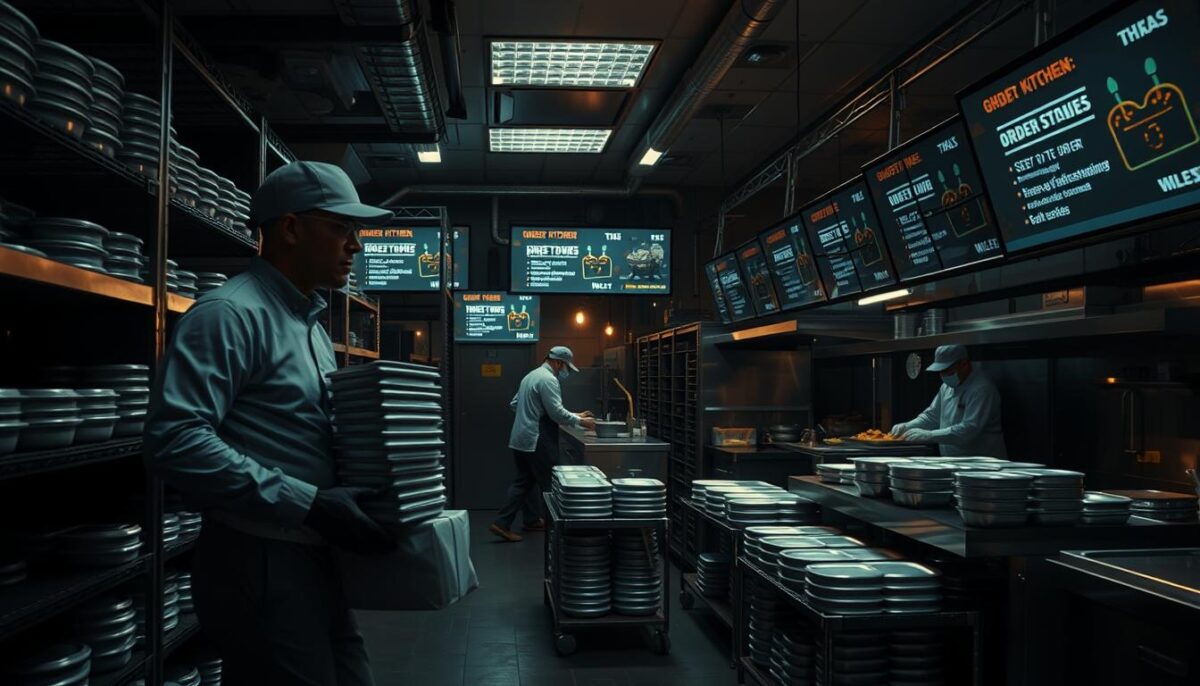
Setting Up Your Ghost Kitchen Operations
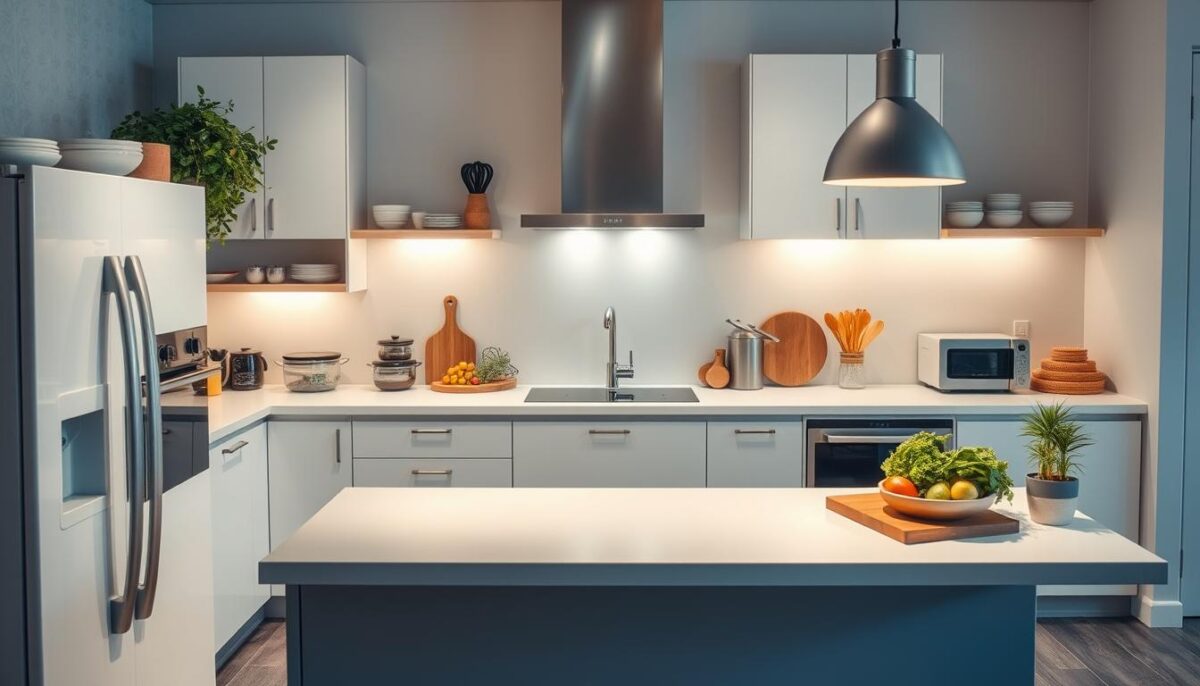
Ghost kitchen setup is a multifaceted process that requires attention to detail and strategic decision-making. To establish a successful ghost kitchen, you need to focus on the foundational aspects that will drive your business forward.
Essential Equipment and Layout
When setting up your ghost kitchen, it’s crucial to invest in the right equipment and design an efficient layout. This includes commercial-grade cooking appliances, food preparation stations, and storage solutions. Renting a space in a shared kitchen or commercial kitchen facility can be cost-effective, but ensure that the existing tenants’ schedules align with your operational needs.
Efficient Layout: Design your kitchen to maximize workflow efficiency, ensuring that food preparation, cooking, and packaging areas are well-defined and equipped to handle your menu offerings.
Licensing and Legal Considerations
Navigating the legal landscape is critical when establishing a ghost kitchen. This involves obtaining necessary food service permits, health department approvals, and business licenses. Licensing requirements may vary depending on whether you’re operating in a shared kitchen space or a dedicated ghost kitchen facility.
Key Considerations: Ensure compliance with food safety regulations, maintain proper insurance coverage (liability, property, and business interruption), and protect your virtual brand concepts through trademark registration and intellectual property protection.
Real-World Success Stories in Ghost Kitchen Operations
As the food delivery landscape continues to evolve, ghost kitchens have emerged as a key player, with many operators achieving remarkable success. The rise of virtual brands has enabled restaurants to expand their reach without the need for additional brick-and-mortar locations.
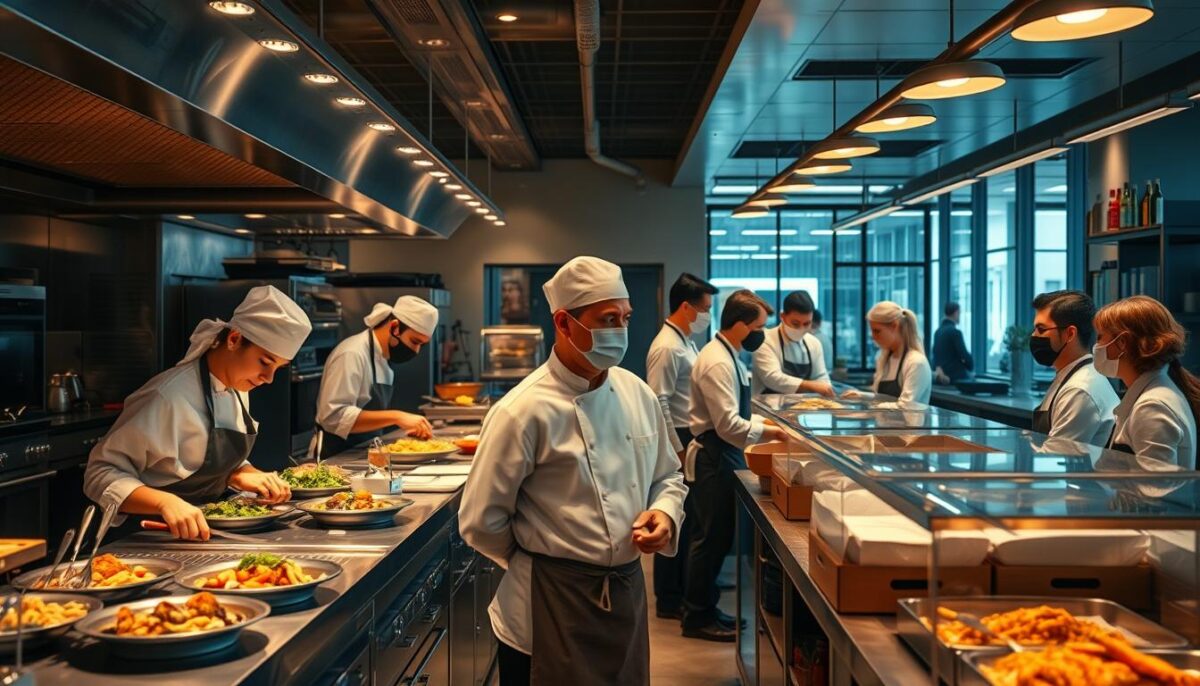
Independent Operator Case Studies
Independent operators have been quick to capitalize on the ghost kitchen trend, with many achieving significant success. For instance, MrBeast Burger, a virtual restaurant founded by popular YouTuber MrBeast, has expanded to nearly 1,000 locations across the United States. This success can be attributed to the power of celebrity partnerships and effective digital marketing strategies.
As an independent operator, leveraging delivery platforms and creating a virtual brand can be a highly effective way to reach new customers and drive sales.
Lessons from Major Brand Transitions
Major restaurant brands have also taken notice of the ghost kitchen phenomenon, with many transitioning portions of their operations to this model. By doing so, they have been able to test new markets, optimize kitchen operations, and maintain revenue during challenging times like the COVID-19 pandemic.
“The ghost kitchen model has allowed us to be more agile and responsive to changing consumer preferences,” said a representative from a major restaurant chain.
By adopting a ghost kitchen strategy, established brands can maximize kitchen capacity and improve overall efficiency, leading to increased profitability.
In conclusion, the success stories in ghost kitchen operations demonstrate the potential for both independent operators and major brands to thrive in this rapidly evolving landscape.
The Future of Ghost Kitchen Operations
The ghost kitchen industry is on the cusp of a new era, driven by emerging trends and technologies. As the food delivery landscape continues to evolve, operators must be prepared to adapt and innovate to remain competitive.
Emerging Trends and Technologies
Several key trends are shaping the future of ghost kitchens. The rise of cloud kitchens is enabling multiple virtual brands to operate from a single kitchen, maximizing efficiency and reducing costs. Advances in food delivery technology are also improving the customer experience, with features like real-time tracking and AI-powered ordering systems.
To stay ahead, ghost kitchen operators must be aware of these trends and be prepared to leverage new technologies as they emerge. This may involve investing in new equipment, adopting new business models, or exploring new markets.
Preparing for Industry Evolution
To prepare for the continued evolution of the food delivery industry, ghost kitchen operators should focus on building a flexible and scalable business model. This may involve diversifying revenue streams, such as by offering catering or meal kits, or investing in data-driven decision making tools to better understand customer preferences.
Additionally, operators must be prepared to adapt to changing consumer preferences and regulatory requirements. By staying informed about industry trends and technological innovations, ghost kitchen operators can maintain a competitive advantage and thrive in a rapidly changing market.
Measuring Success in Your Ghost Kitchen Business
Measuring success in your ghost kitchen business requires a deep dive into key performance indicators and growth metrics. To scale your business effectively, you need to track the right metrics that indicate readiness for expansion.
Key Performance Indicators
Key performance indicators (KPIs) are crucial for evaluating the success of your ghost kitchen operations. Some essential KPIs include order fulfillment rate, customer satisfaction score, and average order value. These metrics help you understand how well your kitchen is performing and where improvements are needed.
For instance, a high order fulfillment rate indicates efficient kitchen operations, while a low customer satisfaction score may signal issues with food quality or delivery. By monitoring these KPIs, you can make data-driven decisions to optimize your operations.
| KPI | Description | Target |
|---|---|---|
| Order Fulfillment Rate | Percentage of orders fulfilled on time | >95% |
| Customer Satisfaction Score | Average customer rating | >4.5/5 |
| Average Order Value | Average amount spent per order | $25-$50 |
Growth and Expansion Metrics
To determine readiness for growth and expansion, you need to analyze metrics beyond your current operations. This includes assessing market penetration, customer geographic data, and the performance of multiple virtual brands.
By evaluating these metrics, you can identify opportunities for new virtual brands or expansion to new delivery areas. For example, if your customer geographic data shows a high demand from a particular neighborhood, you may consider expanding your delivery radius to include that area.
Expansion Metrics to Track:
- Market penetration rate
- Customer acquisition cost
- Revenue growth rate
By tracking these metrics and making data-driven decisions, you can develop a successful expansion strategy for your ghost kitchen business.
Conclusion
As we wrap up our exploration of ghost kitchen operations, it’s clear that this model is revolutionizing the food service industry. The six hidden secrets we’ve uncovered – strategic location selection, menu engineering, multi-brand strategy, technology integration, labor optimization, and effective marketing – form the foundation of successful ghost kitchen operations. By combining culinary expertise with digital innovation, ghost kitchens and cloud kitchens are redefining the way customers order food for delivery, eliminating the need for a physical storefront. As the industry evolves, I encourage you to consider how ghost kitchen models might fit into your current or future food service operations.
FAQ
What is a ghost kitchen, and how does it differ from a traditional restaurant?
A ghost kitchen, also known as a cloud kitchen or virtual restaurant, is a commercial kitchen space that produces food solely for delivery or pickup, without a physical storefront or dining area. Unlike traditional restaurants, ghost kitchens focus on delivery and online ordering, streamlining their business model to maximize efficiency and profitability.
How do ghost kitchens manage food delivery logistics?
Ghost kitchens often partner with third-party delivery services like Uber Eats, DoorDash, or GrubHub to reach a broader customer base. They also utilize proprietary software to manage online orders, optimize delivery times, and streamline their kitchen model for maximum productivity.
Can multiple brands operate from the same ghost kitchen?
Yes, one of the key benefits of the ghost kitchen model is the ability to operate multiple brands or concepts from a single commercial kitchen space. This allows entrepreneurs to test new markets, diversify their offerings, and maximize kitchen capacity.
What are the advantages of using a commissary kitchen or shared kitchen space?
Commissary kitchens or shared kitchen spaces offer a cost-effective solution for ghost kitchen operators, providing access to commercial kitchen equipment, reduced overhead costs, and a flexible kitchen space that can be rented or shared.
How do ghost kitchens maintain food quality during delivery?
To maintain food quality, ghost kitchens focus on menu engineering, preparing dishes that travel well, and partnering with reliable delivery drivers to ensure timely and secure food transport.
What are the key performance indicators (KPIs) for measuring success in a ghost kitchen business?
Key metrics for ghost kitchen success include order volume, revenue growth, customer satisfaction ratings, and profit margin analysis. By monitoring these KPIs, ghost kitchen operators can refine their business strategy, optimize kitchen operations, and drive long-term growth.

